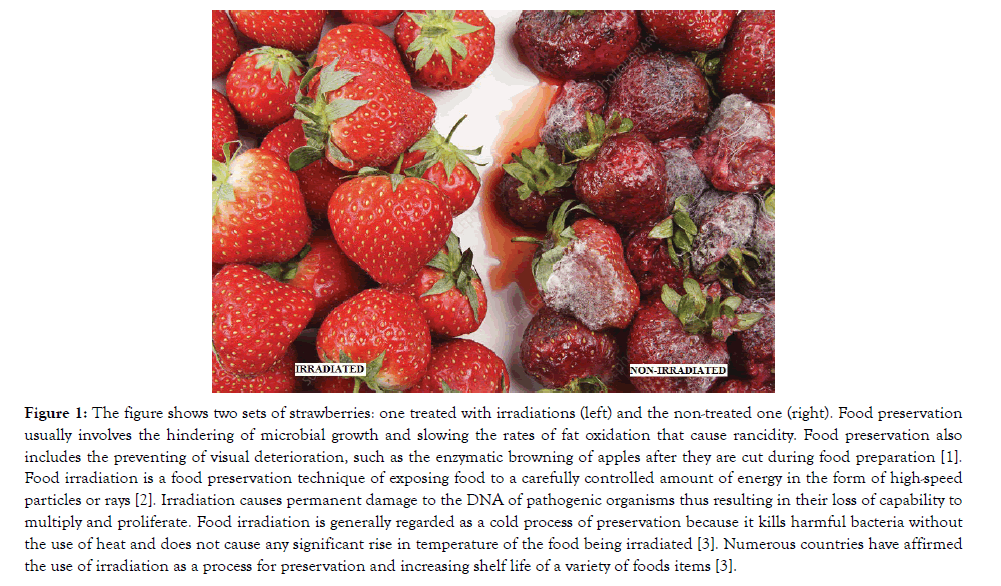Indexed In
- Genamics JournalSeek
- Academic Keys
- JournalTOCs
- China National Knowledge Infrastructure (CNKI)
- Access to Global Online Research in Agriculture (AGORA)
- Centre for Agriculture and Biosciences International (CABI)
- RefSeek
- Directory of Research Journal Indexing (DRJI)
- Hamdard University
- EBSCO A-Z
- OCLC- WorldCat
- Scholarsteer
- SWB online catalog
- Publons
- Euro Pub
- Google Scholar
Useful Links
Share This Page
Journal Flyer

Open Access Journals
- Agri and Aquaculture
- Biochemistry
- Bioinformatics & Systems Biology
- Business & Management
- Chemistry
- Clinical Sciences
- Engineering
- Food & Nutrition
- General Science
- Genetics & Molecular Biology
- Immunology & Microbiology
- Medical Sciences
- Neuroscience & Psychology
- Nursing & Health Care
- Pharmaceutical Sciences
Image Article - (2020) Volume 11, Issue 11
Food Irradiation: A way of Food Preservation an Image Article
Gloria Thomson*Received: 15-Oct-2020 Published: 31-Oct-2020, DOI: 10.35248/2157-7110.20.11.850
Image

Figure 1: The figure shows two sets of strawberries: one treated with irradiations (left) and the non-treated one (right). Food preservation usually involves the hindering of microbial growth and slowing the rates of fat oxidation that cause rancidity. Food preservation also includes the preventing of visual deterioration, such as the enzymatic browning of apples after they are cut during food preparation [1]. Food irradiation is a food preservation technique of exposing food to a carefully controlled amount of energy in the form of high-speed particles or rays [2]. Irradiation causes permanent damage to the DNA of pathogenic organisms thus resulting in their loss of capability to multiply and proliferate. Food irradiation is generally regarded as a cold process of preservation because it kills harmful bacteria without the use of heat and does not cause any significant rise in temperature of the food being irradiated [3]. Numerous countries have affirmed the use of irradiation as a process for preservation and increasing shelf life of a variety of foods items [3].
REFERENCES
- Akinloye MK, Isola GA, Olasunkanmi SK, Okunade DA. Irradiation as a food preservation method in Nigeria: prospects and problems. Int J Res Appl Sci Eng Technol. 2015;3:85-96.
- Ajibola OJ. An overview of irradiation as a food preservation technique. Novel Res Microbiol J. 2020;4:779-789.
- Ganguly S, Mukhopadhayay SK, Biswas S. Preservation of food items by irradiation process. Int J Chem Biochem Sci. 2012;1:11-13.
Citation: Thomson G (2020) Food Irradiation: A Way of Food Preservation an Image Article . J Food Process Technol. 11:850.
Copyright: © 2020 Thomson G. This is an open-access article distributed under the terms of the Creative Commons Attribution License, which permits unrestricted use, distribution, and reproduction in any medium, provided the original author and source are credited.


